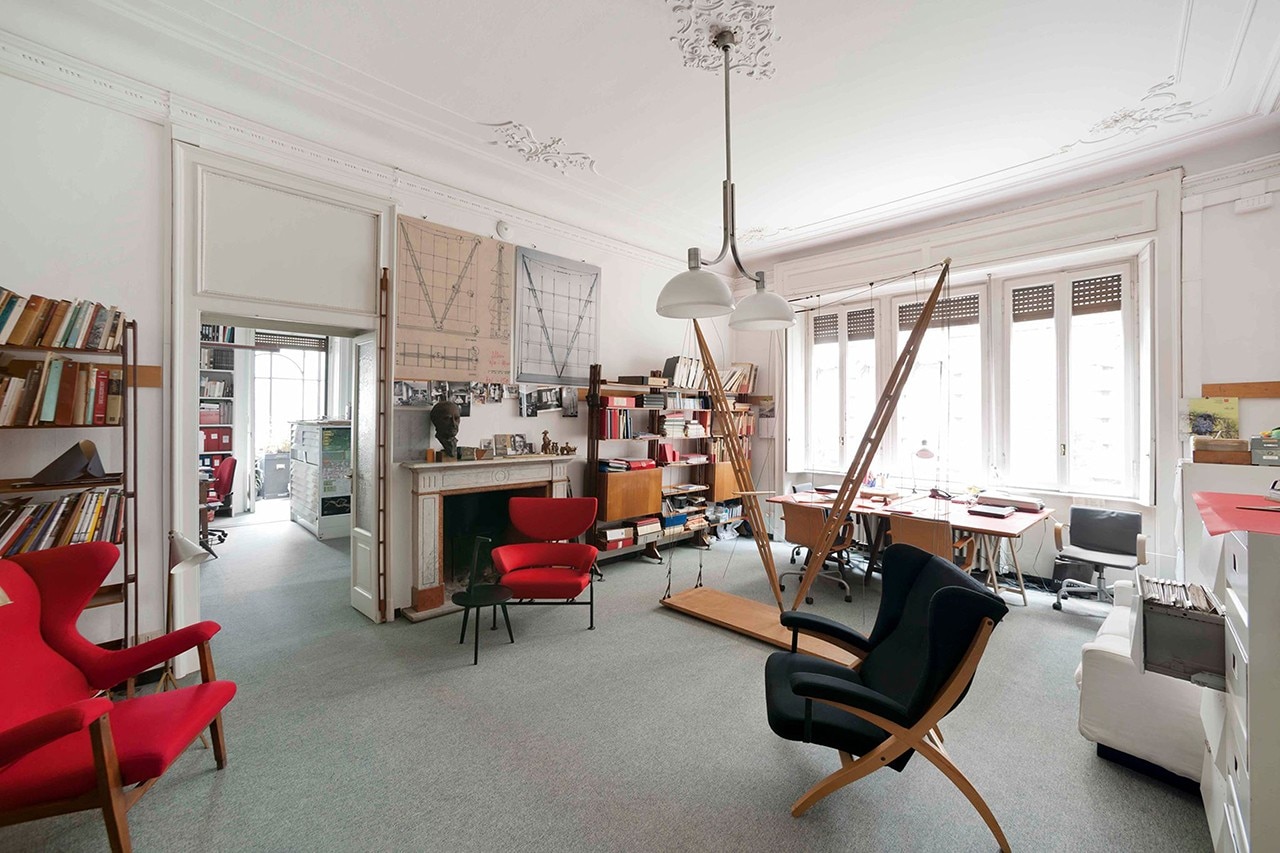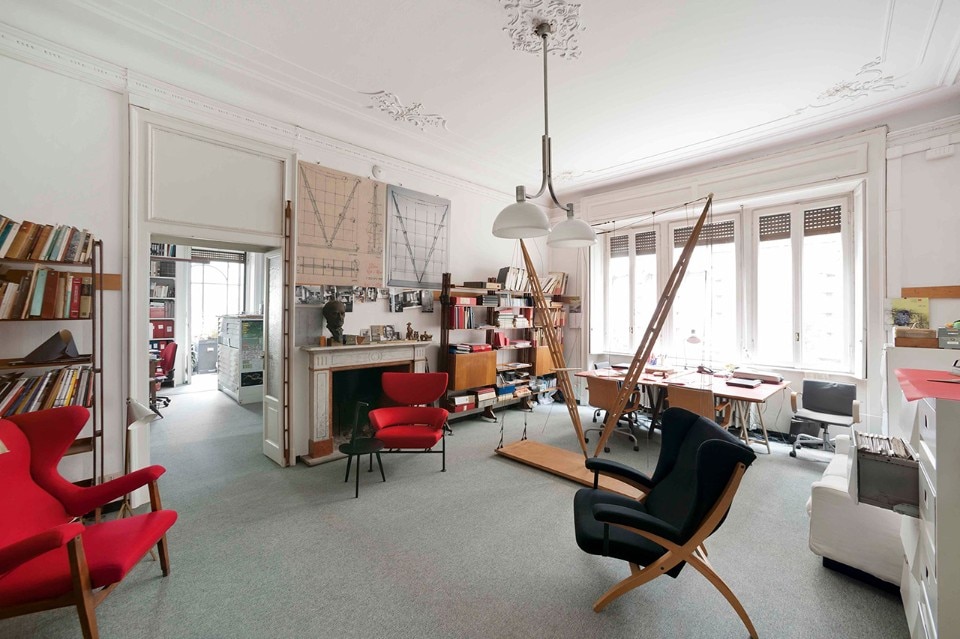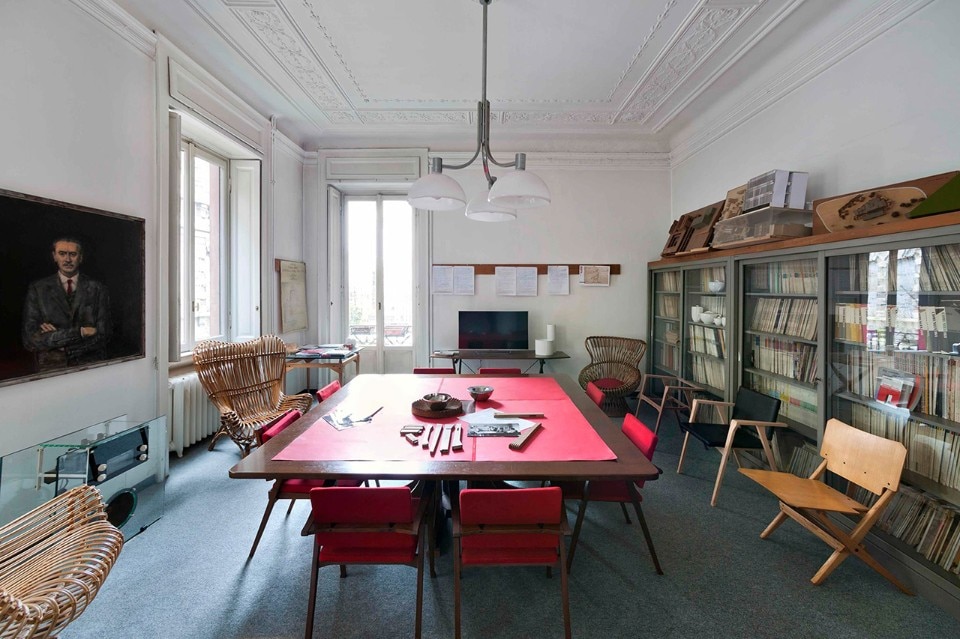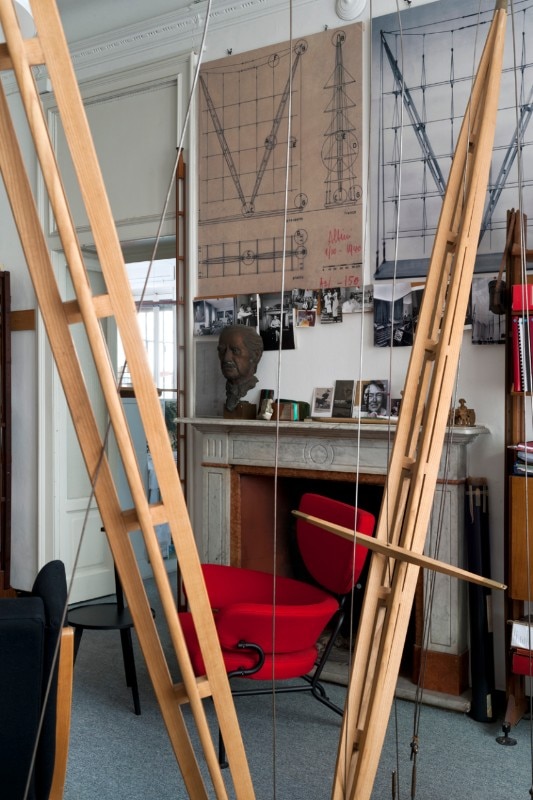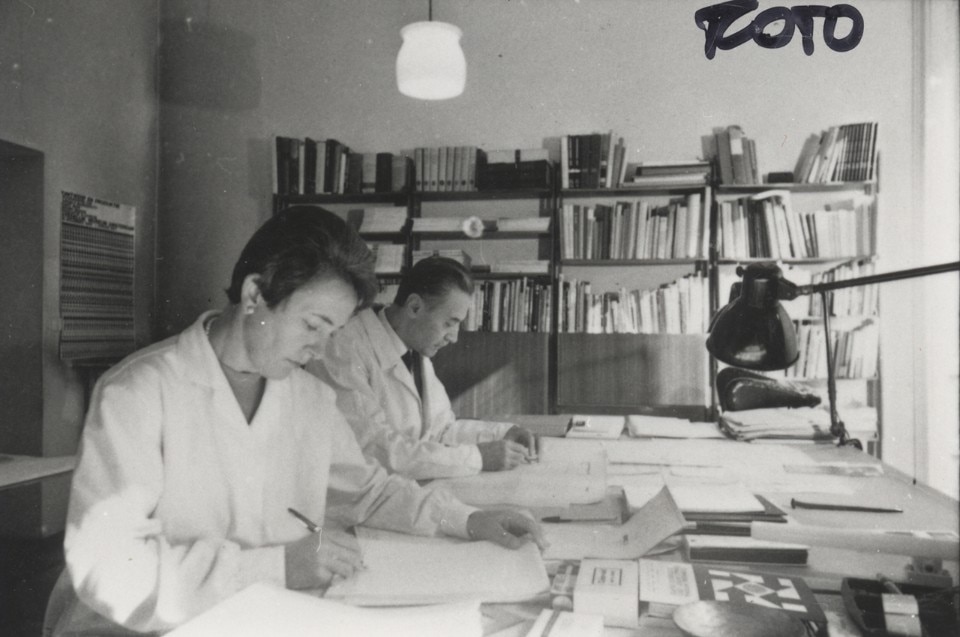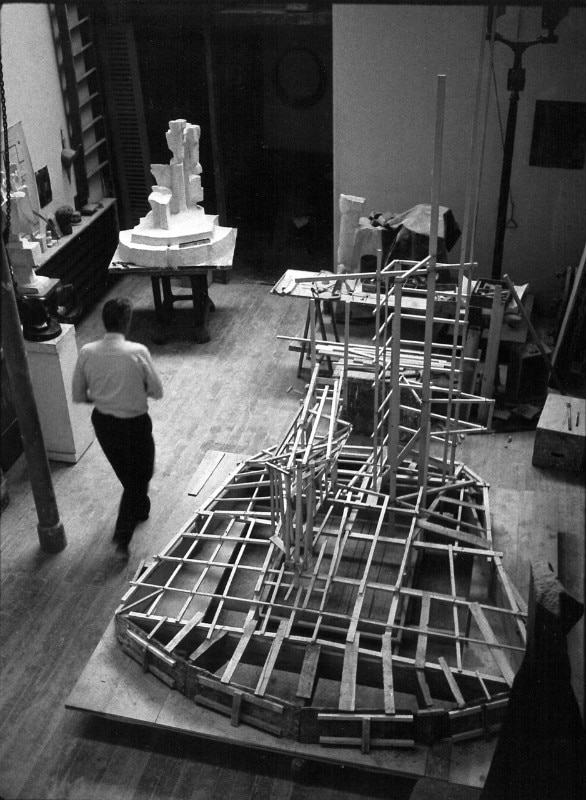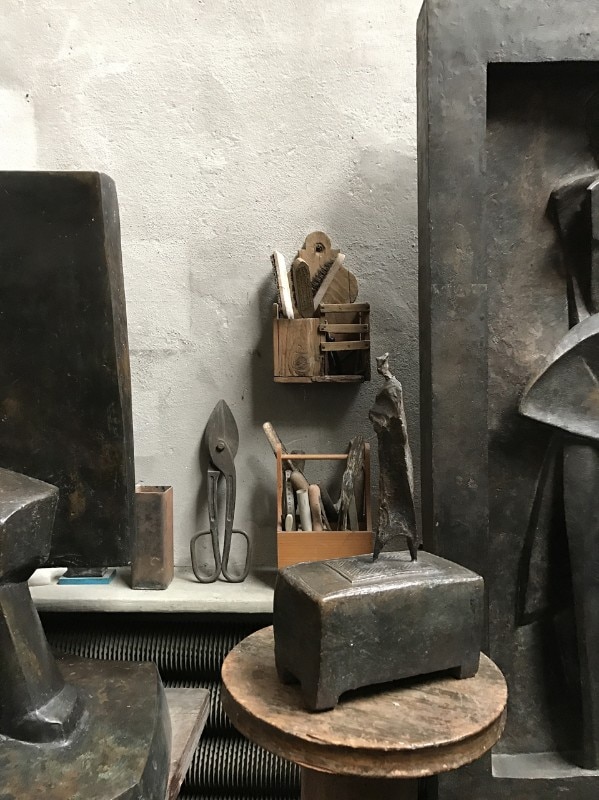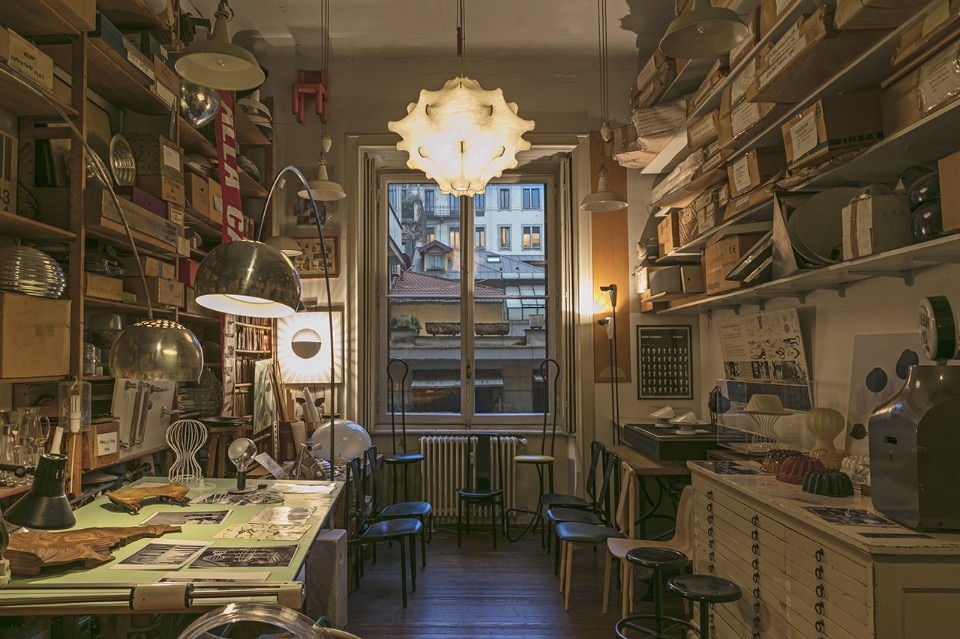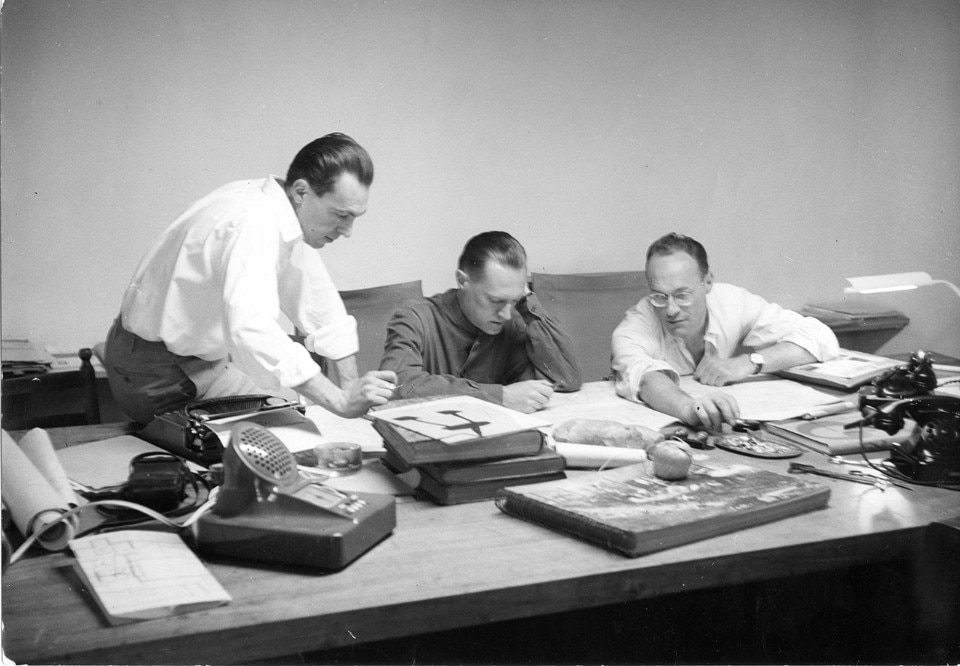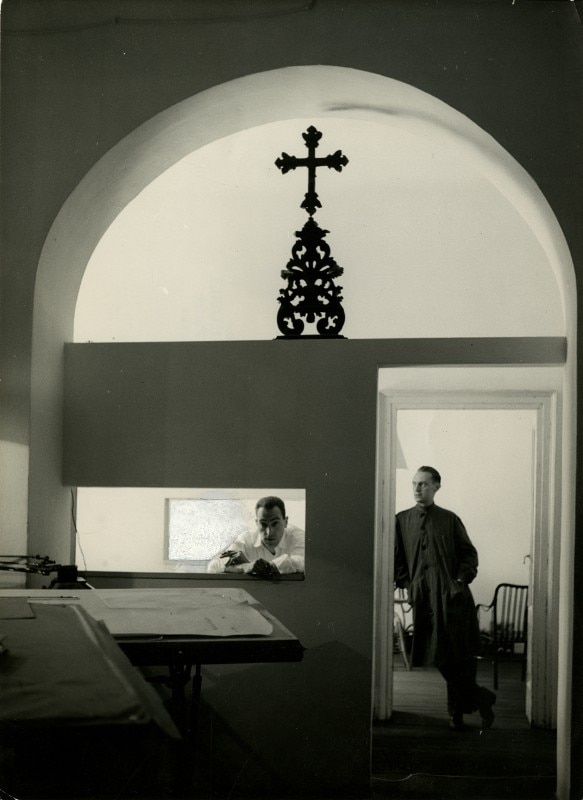This article was originally published on the supplement of Domus 1039, October 2019
The space in which creativity unfolds is intrinsic to the creative process itself. An artwork, a piece of architecture or design is conceived, developed and executed in surroundings whose importance is often underestimated, even when the artistic results are grand. Recognition (and hopefully preservation) of the character of certain studios sometimes comes only when they are at risk of being dismantled, shut down or entirely altered.
Yet the atelier as seen in a famous painting by Fortunato Depero, La casa del mago (1920), is indubitably the most lived-in place of the creative person, the space that is formed in his own image – even more closely than his dwelling, which of course is influenced by domestic necessities. Exceptions are found in cases where the atelier is chosen as a place to frugally live in, or where the house is all-in-one with the atelier, or integrates it partially.
By definition, the creative person’s workroom is independent and self-referential – sometimes austere and dry in order to breathe and concentrate, other times saturated with the objects needed for the layering process of thinking and elaborating. The artist’s atelier is almost always solitary; the architect’s and designer’s is usually collective, but above all their places are full of memories, where the archives represent the beating of a creative heart. These surroundings are permeated with a special atmosphere. When they are no longer used, but “kept alive”, they become mirrors in which we can still see the reflection of those who practised their craft there.
Independent and self-referential – sometimes austere and dry, other times saturated with objects – the creative atelier is a design manifesto of its inhabitant.
Like the house museum, the creative person’s workspace can rightly acquire the status of cultural heritage. When their occupants are no longer alive, ateliers preserve a rich potential whose scope may be varied in order to not fossilise into dusty Wunderkammern. The three-exhibition initiative “L’atelier natura viva” is an interpretation of this possibility. The workspaces of two architectural studios and one sculptor’s atelier are brought to life through archive photographs displayed within the walls of the very same rooms they depict. They are like movie stills that reconstruct stories, phases and the original aura of the interiors, aiming to portray them as live, lived-in organisms.
“L’atelier natura viva” began in Milan: the cultural landscape where all throughout the 20th century artists and creative people of international renown converged, establishing their residence and workplace in the city. The three small exhibitions were organised during “Milano MuseoCity 2019”, an event held from 1 to 3 March. They were hosted at the Fondazione Franco Albini, the Fondazione Achille Castiglioni, and Studio Mario Negri under the curatorship of a research group called D.E.SY. (for Designing Enhancement Strategies and Exhibit SYstems for the Italian House Museums and Studios) coordinated by Anna Mazzanti of the Milan Polytechnic design department.
The pictures and archive materials preserved by the Fondazione Franco Albini trace three movements in time and physical space. His first atelier, located at Via Panizza 4, was opened by Albini and Giancarlo Palanti in 1931. From 1953 to 1960, it was led by Albini with Franca Helg, after which it moved to Via XX Settembre 21 (1960-1970) and to Via Telesio 13 from 1971 to Albini’s death in 1977. After he died, Franca Helg, Antonio Piva and Marco Albini continued his line of work. The space at Via Telesio is now home to the Albini Foundation and to the architecture office Studio Albini Associati Architetti led by Marco and Francesco Albini.
The selected images on display include the iconic portrait of Franco Albini made by the great American photographer Irving Penn in 1948, the only surviving picture taken at the Via Panizza studio. Another photo shows Franco Albini and Franca Helg working side by side at the office on Via XX Settembre in the 1960s. The ones taken in the 1970s are set in the current location on Via Telesio, where the office became “Studio di architettura Franco Albini, Franca Helg, Antonio Piva, Marco Albini”.
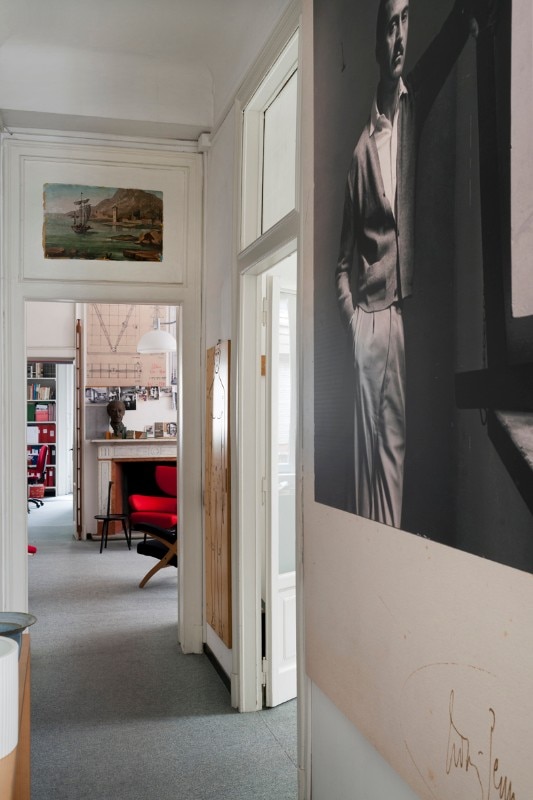
At the Fondazione Achille Castiglioni, many photographs illustrate the collaboration between the three brothers Livio, Pier Giacomo and Achille Castiglioni. Ten of them portray the brothers in their first studio at Corso di Porta Nuova 57 (1944-1960). In the same court, there was the atelier of their sculptor father Giannino Castiglioni, and the display builders Chiesa & C. (later Portanuova Allestimenti). One photo shows Luigi Caccia Dominioni, who shared the space with Livio and Pier Giacomo from 1943 to 1944.
The Castiglionis moved to Piazza Castello 27 in 1960-61, where Achille worked until his death in 2002. Pier Giacomo died at age 55 in 1968. The Piazza Castello location is now home to the Fondazione Achille Castiglioni. Four snap-shots taken by Luciano Ferri in the mid-1960s follow Pier Giacomo and Achille through the sequence of big, smoke-filled rooms with names like “prototype room”, “drafting table room” and “mirror room”. In each one, many of their famous objects can be recognised, including the legendary collection of objets trouvés that was an endless source of inspiration to the two brothers. Another series shows Marcel Breuer, who visited them in 1962. These fun, previously unseen photos capture a historical encounter.
At Studio Mario Negri, snap-shots by Paolo Monti and Arno Hammacher portray the sculptor and his atelier, first on Via Pisacane, then at Via Stoppani 6 and finally at Via Stoppani 7. Rita Capurro and Alessandra Spagnoli write, “The artist modelling his work; objects indicating private corners; finished sculptures and ones being worked on all tell the tale of laborious years of creation from the 1950s to 1987. The atelier, used only by Negri, seems to retain his presence in the poignant picture of his empty armchair, seen in a photo taken by Hammacher a few days after his death.”
These three small exhibitions were hung inside three venerable, living workplaces with the common intent to send a message to future generations. It regards a cultural legacy handed down from the walls of these rooms, from the objects and spaces that speak.


